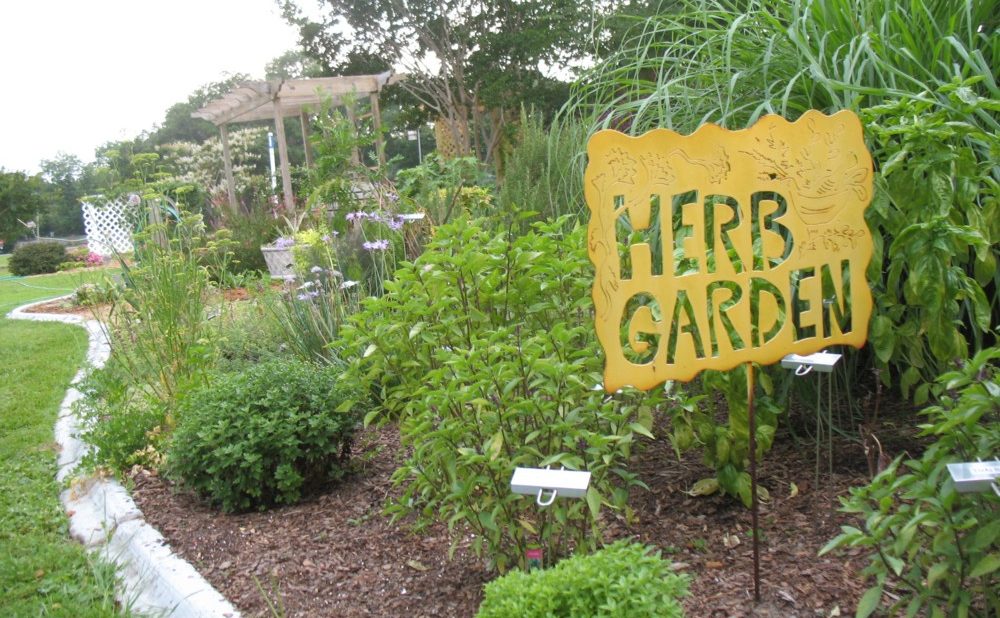
by Ashley Stonecipher | Sep 23, 2021
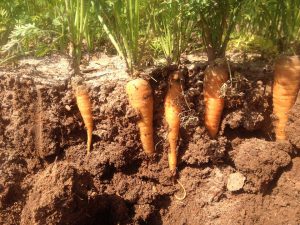
Photo by Full Earth Farm.
Yes, that’s right! We made it through the hottest part of the year and we are looking ahead to fall just around the corner! I am excited to be discussing September and what we can do to prepare for fall in the garden. As the nighttime temperatures start to cool down, we are given many more options.
For annual color plantings in September, try Ageratum, Celosia, Zinnias, and Wax Begonia to add fall color to your landscape. Bulbs will also add color, texture, and pattern to a bed. If you have some extra space, a variety of elephant ears could really accent a bed or you could always go with the classic calla, narcissus or zephyr lily. Popular vegetables to plant in North Florida in September are broccoli, carrot, cabbage, and collards. See Vegetable Gardening in Florida This is also the time of year to establish strawberry plants. Some great herbs to get started are Mexican tarragon, mint, rosemary, and basil.
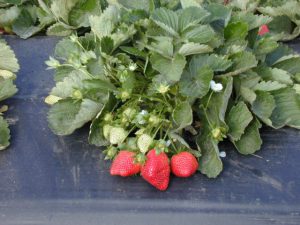
Image Credit: Matthew Orwat UF/IFAS Extension Washington County
There are many things that can be done in your lawn during September. Monitoring your lawn for its health and potential insect pests is important this time of year. Common insects to scout for are fall armyworms, chinch bugs, mole crickets, and sod webworms. The last fertilizer application should be done by the middle to end of September. Make sure you choose a fertilizer with little to no phosphorus unless a soil test shows differently. To maintain a healthy lawn, avoid weed and feed products and only apply herbicides in areas with high infestations of weeds. Weed and feed products are not recommended because the timing of when to fertilize and the timing of the weed killer is not always the same. The best management practice is to use a separate treatment for weeds and when possible spot treat weeds.
If you already have bulbs in your landscape from previous growing seasons, this is the time to divide and replant those that are big. You can also add organic matter to new planting areas. Continue working on your vegetable plants and prepare them for either transplants for a fast start, or plants seeds for more variety. Throughout your landscape, it is important that plants are getting the right amount of water as we go in and out of wet and dry weather this time of year.
October will be here before we know it in just a couple of weeks. Look out for the next article to come. We will be getting into the cooler nights and more options for planting vegetables and herbs!
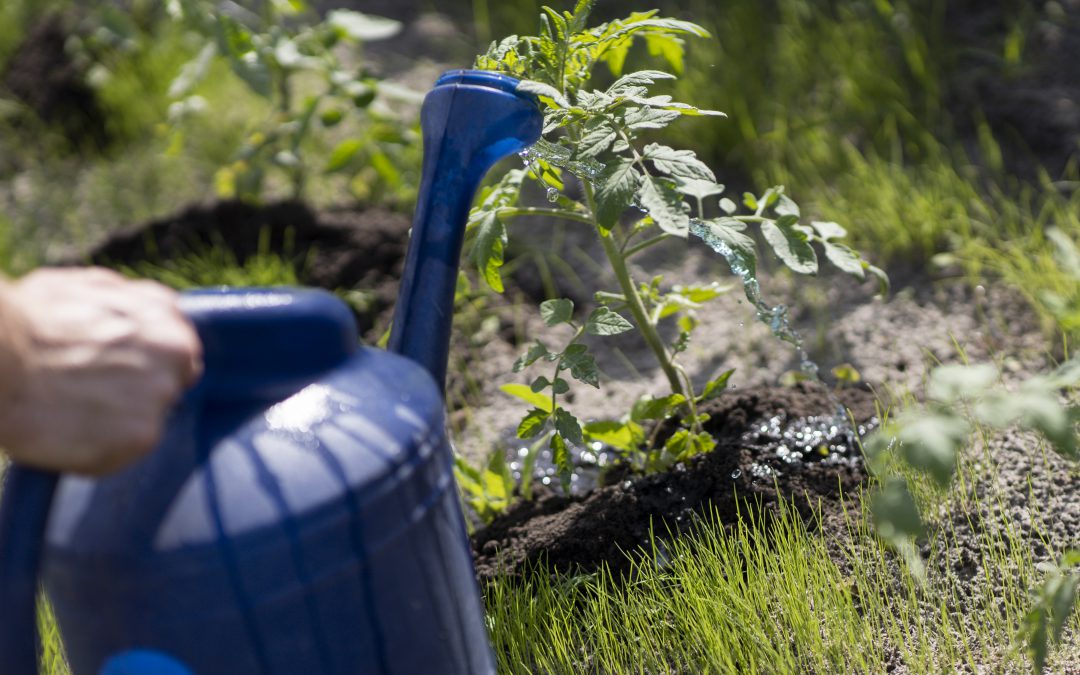
by Ashley Stonecipher | Aug 5, 2021
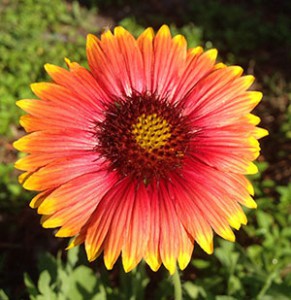
Native Gaillardia. Photo courtesy UF/IFAS.
The hottest days of the summer are here and you might be thinking, “There is no way something could survive this heat!”. You might also be wondering “What can I do in my landscape?” Well, you are correct – it is hot and there are not many plants that thrive in this type of weather, but the good news is we are at the end of the summer season and there are things we can begin to do to get ready for fall. It’s not too late to get the last of the summer vegetables going such as lima beans, cucumbers, eggplants, and peppers. Many cool season crops can also be planted by seed now and tomatoes will thrive going into the fall season. See Vegetable Gardening in Florida
There are some heat-tolerant annuals like vinca, gaillardia, bulbine, and coleus that can be planted now in the landscape. See Annuals. Any time of the year, even late summer, bulbs like Aztec Lily, Butterfly Lily, Walking Iris, and Spider Lily can be planted. See Bulbs for Florida. Not many herbs do well in our Florida sun this time of year, but Bay Laurel, Ginger, Mexican Tarragon, and Rosemary can be planted as transplants now but not as seeds just yet. See Herbs.
August and late summer is the time of year that you may be seeing damage in your lawns. This could be caused by insects, disease, or irrigation failure. It is important to determine the cause, so the proper remedy is used. Some ways to avoid lawn damage are checking your mower blades regularly and making sure they are sharp. Also only cut the top one third of the blade of grass to not stress it in the heat of the day. It is good practice to test your irrigation clock and have a rain sensor. Some municipalities in north Florida prohibit the application of fertilizer during the summer rainy season from June to September so check with your local extension office. See Insect Management in Your Florida Lawn
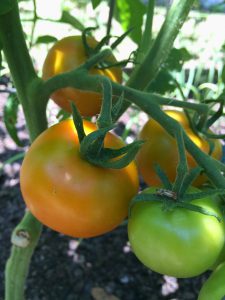
You can become more self-sufficient by growing your own healthy food in your backyard. Photo by Molly Jameson.
There are some other maintenance measures you can take in August to help your landscape and prepare for the fall season. If older palm fronds are yellowing, this could indicate a deficiency in magnesium or potassium. Talk to your local agent or visit your local store for an appropriate palm fertilizer. See Palm Nutrition and Fertilization. Are you holding on to those beautiful fall mums or decorative Christmas poinsettias? Now is the time to pinch them back to allow time for buds to set for winter blooms. Finally, it is a good time to deadhead (remove old blooms) and fertilize flowering annuals and perennials. We’ve had substantial rain this summer, so keep in mind that the soil could be lacking nutrients. A soil test can give you data that indicates what you need for the up-and-coming growing season.
Information for this article can be found in the UF/IFAS EDIS publication: “North Florida Gardening Calendar” by Sydney Park Brown: ENH1190/EP451: North Florida Gardening Calendar (ufl.edu)
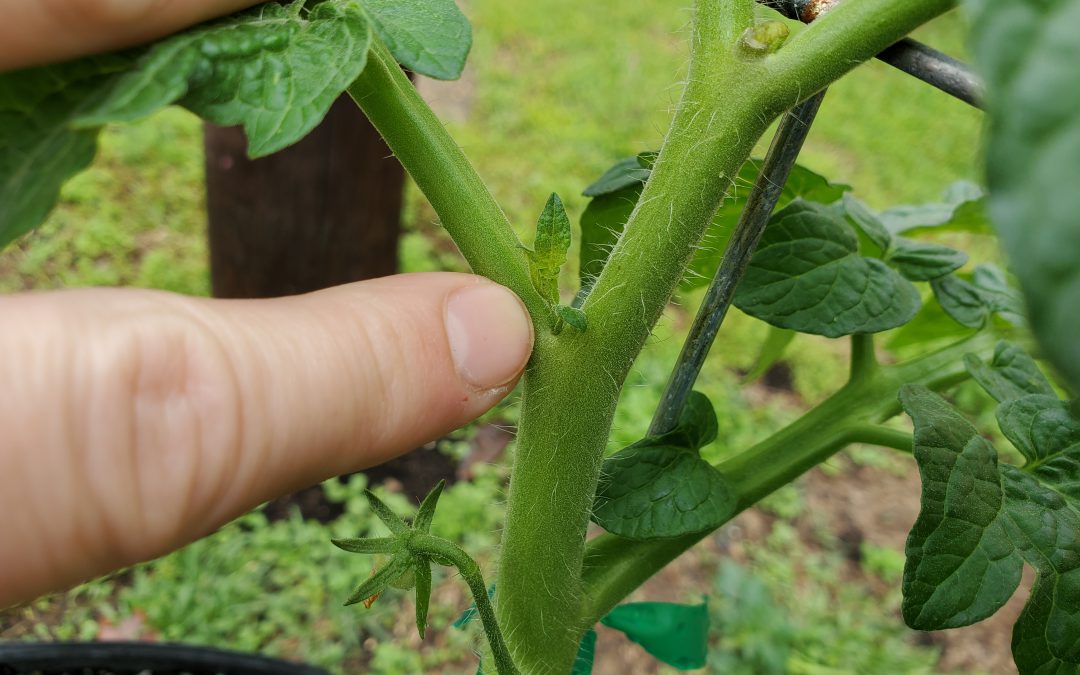
by Daniel J. Leonard | Apr 22, 2021
With the traditional planting date of Good Friday behind us, the home tomato gardening season in the Panhandle is in full swing. While tomatoes are the most persnickety veggie we grow, there are several practices you can adopt to help you succeed: selecting an adapted variety; regularly scouting for insects and disease; and watering and fertilizing appropriately. However, the most overlooked practice for success gardeners can adopt is proper pruning.
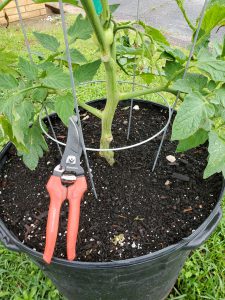
‘Big Beef’ Tomato with lower leaves removed. This is an excellent disease reduction practice. Photo courtesy of Daniel Leonard.
Correct pruning does a couple of positive things for tomatoes. First, it reduces the incidence of disease by preventing leaf contact with the soil, opening the interior of the plant, and allowing better airflow. This is important as many plant pathogens reside in the soil and only need a splash of water to travel onto plant leaves. Also, densely foliaged plants trap warm, moist air in their canopies, creating a perfect environment for disease to flourish. Letting the plant canopy “breathe” through pruning prevents that negative environment from forming! Second, correct pruning of “suckers” (extra growth points that can develop into shoots) helps tomato plants develop optimum yield and fruit quality. By removing suckers, more water, nutrients, airflow, and light are directed to the main stems, where the majority of tomato fruit production occurs. Failing to remove suckers (especially on indeterminate varieties) can result in reduced yields, increased disease, and generally messy plants!
With the reasons for pruning tomatoes established, the next step is learning exactly what to prune and how to do it in a sanitary matter.
- Get rid of any foliage that could encounter the soil, generally all leaves occurring on the lower 12-16″ of the plant. All kinds of nasty tomato destroying diseases, like Early Blight and Bacterial Leaf Spot, reside in the soil and are just waiting to be splashed onto your plants – don’t let that happen.
- Determine how many primary shoots you want your plant to have. Leave enough lower suckers to achieve that number (generally just one, two, or three as more than 3 primary stems gets hard to manage), and prune or pinch out all the rest. To prevent stress from pruning, be diligent in removing suckers when they are still small, 2” or less.
- Always clean and disinfect your pruners before making a cut on a tomato plant. This is best accomplished by rinsing the blades with warm soapy water, drying, and following with by a quick alcohol spray. A 10% bleach solution will also work, but if not thoroughly rinsed after, bleach can corrode pruner blades and other working parts. If you make cuts on a plant that appears diseased, repeat the sanitizing process before you begin pruning another plant as “dirty” pruners are an easy way to spread pathogens in the garden.
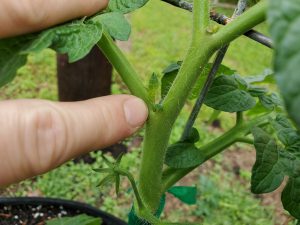
Developing vegetative “sucker” that will need to be removed. Photo courtesy of Daniel Leonard.
While tomatoes are indeed a difficult vegetable to grow, learning to prune them correctly will greatly help to make this a successful season. If you just keep leaves off the ground, suckers pinched, and pruners cleaned, you’ll be well on your way to less disease, prettier plants, and more tomatoes to pick. For more information on growing tomatoes and any other horticultural topic, please contact your local UF/IFAS County Extension office. Happy Gardening!
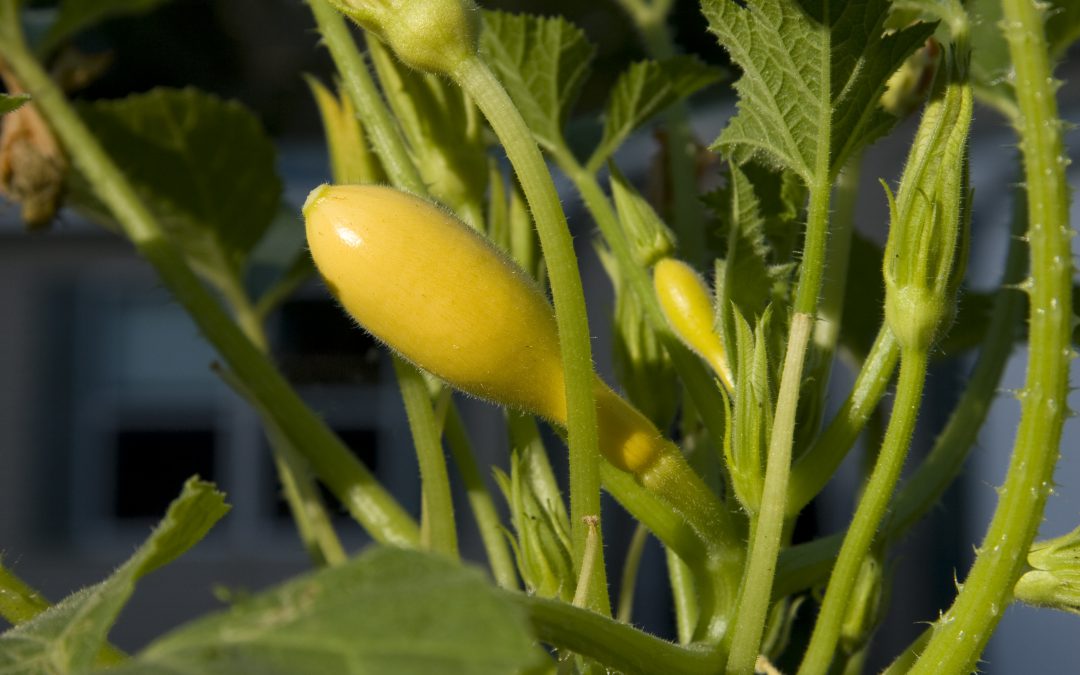
by Mary Salinas | Mar 18, 2021
The weather is warmer and plans and planting for spring vegetable gardens are in full swing. Last week many vegetable gardening topics were addressed in our Gardening in the Panhandle LIVE program. Here are all the links for all the topics we discussed. A recording of last week’s webinar can be found at: https://youtu.be/oJRM3g4lM78
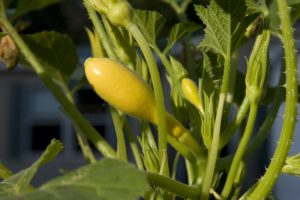
Home grown Squash. Gardening, vegetables. UF/IFAS Photo by Tom Wright.
Getting Started
The place to start is with UF’s ever popular and comprehensive Florida Vegetable Gardening Guide https://edis.ifas.ufl.edu/pdffiles/VH/VH02100.pdf
Many viewers expressed interest in natural methods of raising their crops. Take a look at Organic Vegetable Gardening in Florida https://edis.ifas.ufl.edu/pdffiles/HS/HS121500.pdf
The Square Foot Vegetable Planting Guide for Northwest Florida helps plan the layout of your garden https://sfyl.ifas.ufl.edu/media/sfylifasufledu/leon/docs/pdfs/Vegetable-Square-Foot-Planting-Guide-for-Northwest-Florida-mcj2020.pdf
Maybe you would like the convenience of starting with a fresh clean soil. Gardening in Raised Beds can assist you. https://edis.ifas.ufl.edu/ep472 Also see Gardening Solutions Raised Beds: Benefits and Maintenance https://gardeningsolutions.ifas.ufl.edu/design/types-of-gardens/raised-beds.html
Here is a guide to Fertilizing the Garden https://edis.ifas.ufl.edu/vh025
The Florida Panhandle Planting Guide will help you decide what to plant and when: https://www.facebook.com/SRCExtension/posts/4464210263604274
The Ever-Popular Tomato
To start your journey to the best tomatoes, start with UF/IFAS Gardening Solutions – Tomatoes https://gardeningsolutions.ifas.ufl.edu/plants/edibles/vegetables/tomatoes.html
If you are looking to grow in containers: https://sfyl.ifas.ufl.edu/media/sfylifasufledu/leon/docs/pdfs/Container-Gardening-Spacing-Varieties-UF-IFAS-mcj2020.pdf
Vegetable grafting is gaining in popularity, so if interested, look at this Techniques for Melon Grafting: https://edis.ifas.ufl.edu/hs1257
Blossom end rot occurs when irrigation is irregular and the calcium in the soil does not get carried to the developing fruit. The U-Scout program has a great description of this common problem: https://plantpath.ifas.ufl.edu/u-scout/tomato/blossom-end-rot.html
Our moderators talked about some of their favorite tomato varieties. Josh Freeman is partial to Amelia, a good slicing tomato. Matt Lollar shared some of the best tomato varieties for sauce: Plum/Roma types like BHN 685, Daytona, Mariana, Picus, Supremo and Tachi. For cherry tomatoes, Sheila Dunning recommended Sweet 100 and Juliette.
Whatever variety you choose, Josh says to pick when it starts changing color at the blossom end and bring it indoors to ripen away from pests.
Garden Pest Management
Let’s start with an underground pest. For those of you gardening in the native soil, very tiny roundworms can be a problem. Nematode Management in the Vegetable Garden can get you started: https://edis.ifas.ufl.edu/pdffiles/NG/NG00500.pdf
Leaffooted bugs are quite a nuisance going after the fruit. Here is how to control them: http://extension.msstate.edu/newsletters/bug%E2%80%99s-eye-view/2018/leaffooted-bugs-vol-4-no-24
Cutworms are another frustration. Learn about them here: https://nwdistrict.ifas.ufl.edu/hort/2020/02/27/cutworms-the-moonlit-garden-vandals/
Maybe your tomatoes have gotten eaten up by hornworms. https://gardeningsolutions.ifas.ufl.edu/care/pests-and-diseases/pests/hornworm-caterpillars.html
There are beneficial creatures helping to control the pest insects. Learn to recognize and conserve them and make for a healthier environment. Natural Enemies and Biological Control: https://edis.ifas.ufl.edu/pdffiles/IN/IN12000.pdf
If the beneficials are not numerous enough to control your pests, maybe a natural approach to pest control can help. Natural Products for Managing Landscape and Garden Pests in Florida: https://edis.ifas.ufl.edu/in197
Fungal and bacterial problems can also plague the garden. Go to Integrated Disease Management for Vegetable Crops in Florida for answers: https://edis.ifas.ufl.edu/pdffiles/PP/PP11100.pdf
Get control of weeds early and consult Controlling Weeds by Cultivating & Mulching https://hgic.clemson.edu/factsheet/controlling-weeds-by-cultivating-mulching/
Companion planting is a strategy that has been around for ages and for good reason: https://www.almanac.com/companion-planting-chart-vegetables Some good flowering additions to the garden that Sheila talked about are bee balm, calendula, marigold, nasturtiums, chives, and parsley.
And Some Miscellaneous Topics…
Peppers are another popular crop. Get some questions answered here: https://aggie-horticulture.tamu.edu/archives/parsons/vegetables/pepper.html
When can we plant spinach in Northeast Florida? http://blogs.ifas.ufl.edu/nassauco/2017/07/15/q-can-plant-spinach-northeast-florida/
Figs are a great fruit for northwest Florida. Get started here: https://edis.ifas.ufl.edu/pdffiles/MG/MG21400.pdf and with this https://aggie-horticulture.tamu.edu/extension/homefruit/fig/fig.html
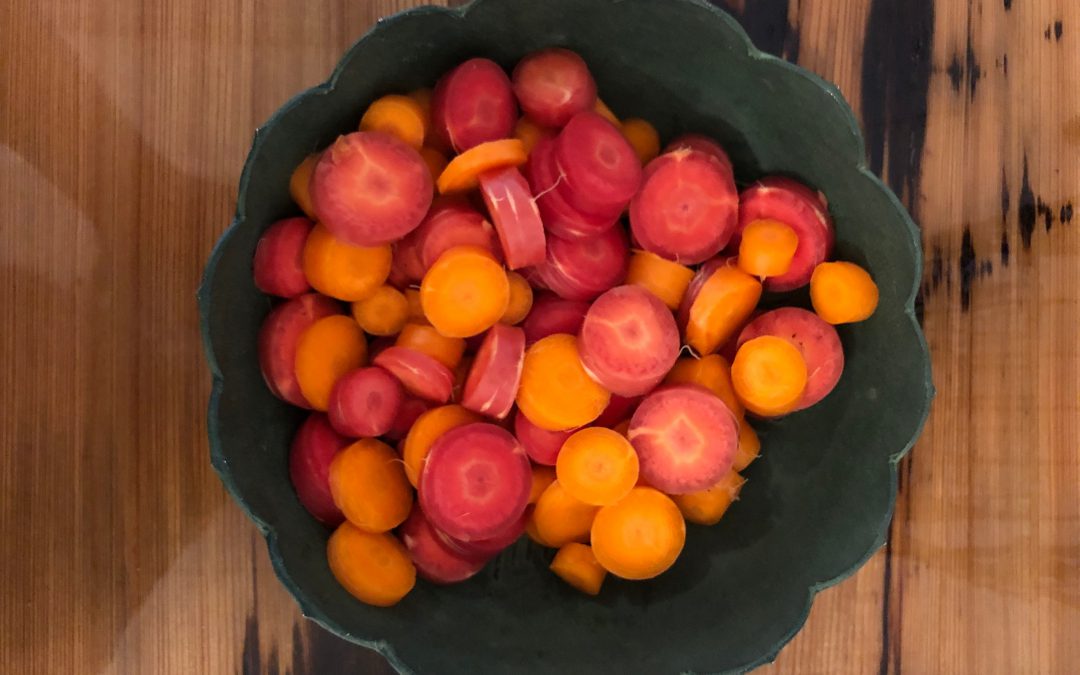
by Daniel J. Leonard | Feb 25, 2021
Carrots are synonymous with a few things: Bugs Bunny, old wives’ tales about improving eyesight, and the color orange. For centuries, orange colored carrot varieties have been the industry standard and still dominate store shelves. These days though, choices for consumers are ever expanding and thankfully home garden carrot variety selection has participated in this phenomenon! With a little searching, gardeners can now source and plant any color and/or type of carrot they desire. For instance, this winter, I planted carrots of various types in various shades of orange, purple, and red. Through this experience, I also found that not all colored carrots look, cook, or perform the same. The following is a quick primer on carrot types followed by my review of the four varieties ‘Bolero’, ‘Red Sun’, ‘Deep Purple’, and ‘Malbec’ after a season of growing.

Carrot varieties (left to right): ‘Bolero’, ‘Red Sun’, ‘Deep Purple’, ‘Malbec’.
There are three main types of carrots regardless of color: Imperator, Nantes, and Chantenay. Imperator types are the extra-long, durable, sweet tasting carrots most often found in stores and are suited best to deep, loose soils. Nantes type carrots are medium length and cylindrically shaped, often with a blunt tip. Sometimes called “storage” carrots, Nantes types are easy to grow and tend to store well for long periods of time after harvest and retain their flavor well. Finally, Chantenay type carrots are excellent performers in shallower beds or soils as they are a bit shorter, possessing a conical shape with roots wider at the top and tapering to the tip, making a deep soil bed a bit less critical. I primarily grow Imperator and Nantes types as I find they give you a little more bang for the buck if you have a deeper (>6”) raised bed. Now, on to the variety reviews.
‘Bolero’ – I always have this carrot in my garden. An extremely versatile Nantes type carrot that has been a consistently high yielder for me whether I grow it in pots or in a traditional raised bed. Typical for a Nantes type, ‘Bolero’ stores very well in the refrigerator and will change your culinary life if you’ve only ever eaten carrots purchased from a store. They are excellent either fresh or cooked, with a complex, sweet taste. If I could only grow one carrot, it would be this one.
‘Malbec’ – Colored carrots have a poor reputation as far as flavor is concerned. ‘Malbec’ is the first non-orange carrot that changed my mind. This Imperator type is as flavorful as they come, deep red throughout, and is easy to grow. For some reason, ‘Malbec’ has been hard to come by the last two years, but if you spot seeds in a catalogue, online, or on a store shelf, it is well worth a purchase!
‘Red Sun’ – Winter 2020 was my first experience with ‘Red Sun’, a brand-new Nantes type carrot from Bejo Seeds. I only planted this variety because I initially could not source ‘Malbec’. Having said that, I was very pleased with ‘Red Sun’. The carrots were extremely vigorous, had excellent top and root growth and mostly held their own with ‘Malbec’ flavor-wise in the kitchen also. I would purchase ‘Red Sun’ again!
‘Deep Purple’ – Wow, they weren’t kidding when they named this variety! Most purple carrots are colored on the exterior but fade to a “normal” orange at their core. Not ‘Deep Purple’! This Imperator type is strikingly dark purple, almost black. Even the tops have a purple hue to them! Cooking them was also an interesting experience. Most colored veggies, peppers, carrots, and others lose their hue when cooked. Not this variety. Not only did ‘Deep Purple’ retain its color after cooking, my hands and cutting board turned a shade of indigo when preparing and, once put in a pan to sautee with other veggies, the juice from ‘Deep Purple’ dyed all the other veggies a deep violet! While I wouldn’t grow ‘Deep Purple’ as my main crop carrot, it definitely has a place in the garden as a tasty novelty.
Carrots are among the easiest to grow, most rewarding vegetables in the winter garden. Next fall, plant a variety of carrots in your home garden and enjoy the many types, colors and flavors that this tasty veggie has to offer! For more information on the above mentioned varieties, home carrot gardening in general, or any other horticultural topic, contact your local UF/IFAS County Extension office. Happy Gardening!













